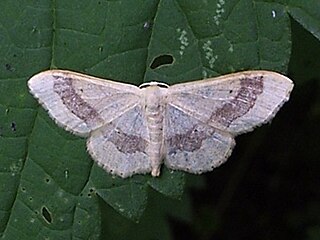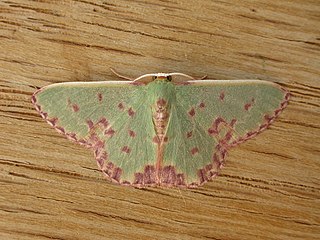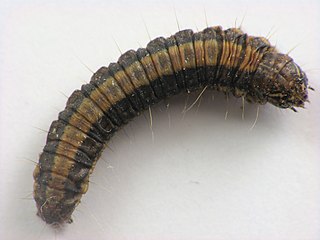
Idaea, sometimes called Hyriogona, is a large genus of geometer moths. It was erected by Georg Friedrich Treitschke in 1825. They are found nearly worldwide, with many native to the Mediterranean, the African savannas, and the deserts of western Asia.

Xanthorhoe is a genus of moths of the family Geometridae described by Jacob Hübner in 1825.

Chrysocraspeda is a genus of moths in the family Geometridae described by Charles Swinhoe in 1893.

Comostola is a genus of moths in the family Geometridae erected by Edward Meyrick in 1888. They are found primarily in Asia and Australia.

Hypodoxa is a genus of moths in the family Geometridae described by Prout in 1912.

Prasinocyma is a genus of moths in the family Geometridae.

Scopula is a genus of moths in the family Geometridae described by Franz von Paula Schrank in 1802.

Oenochrominae is a subfamily of the moth family Geometridae.

Eupitheciini is a tribe of geometer moths under subfamily Larentiinae, often referred to as pugs. The tribe was described by Tutt in 1896.

The Epipaschiinae are a subfamily of snout moths. More than 720 species are known today, which are found mainly in the tropics and subtropics. Some occur in temperate regions, but the subfamily is apparently completely absent from Europe, at least as native species. A few Epipaschiinae are crop pests that may occasionally become economically significant.

Sterrhini is a tribe of the geometer moth family (Geometridae), with about 825 species in 19 genera. There are also 6 genera with 36 species tentatively associated with the tribe. The tribe was erected by Edward Meyrick in 1892.











